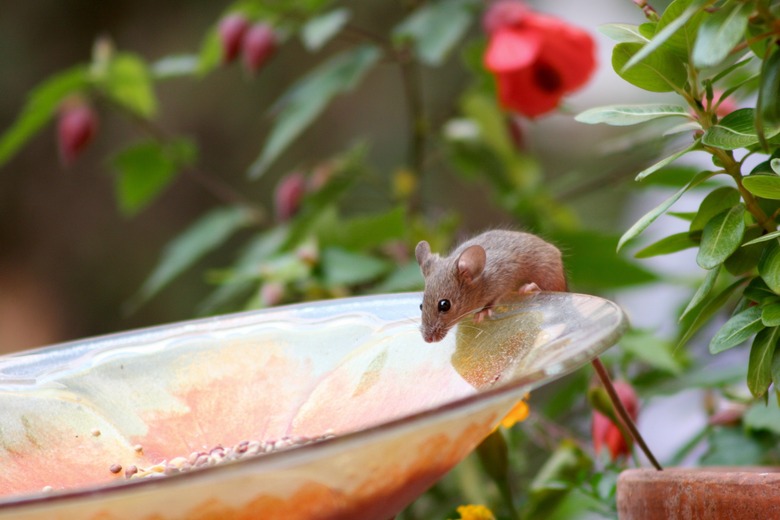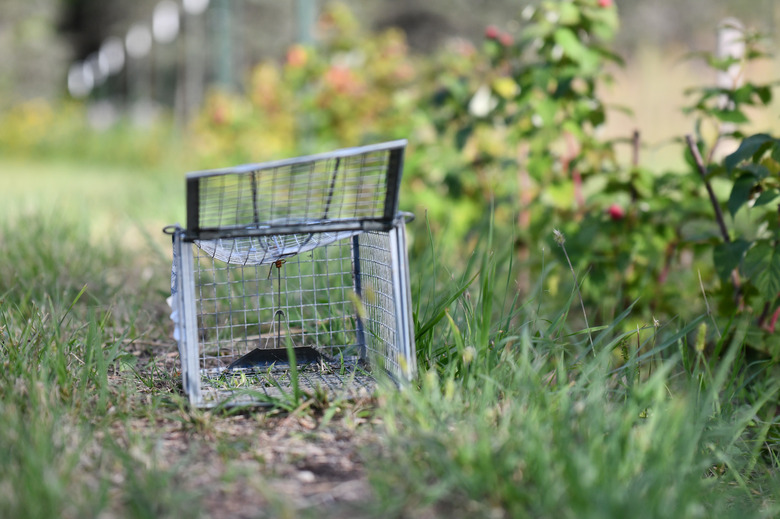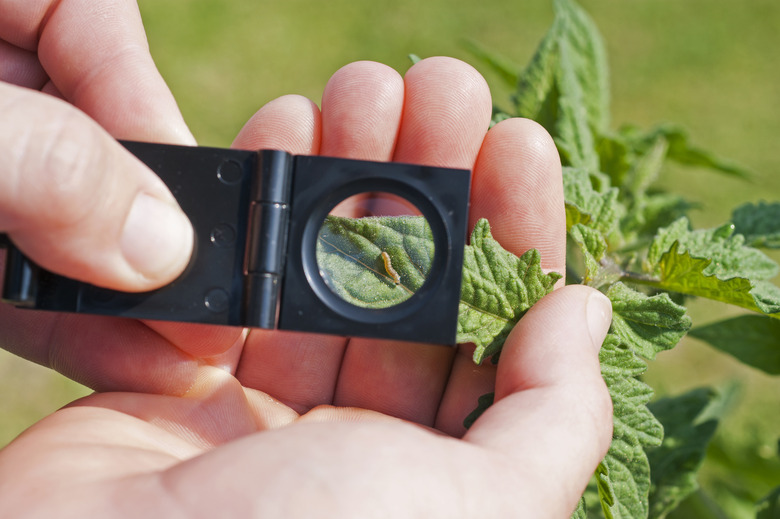What Is Integrated Pest Management?
We may receive a commission on purchases made from links.
Long before synthetic pesticides and insecticides were popular or even available, indigenous farmers used integrated pest management (IPM) practices to grow crops to feed their families and communities, so IPM isn't a new technique, but interest in it has increased since the 1970s. It's a holistic approach to pest control that employs knowledge about the plants you're growing and about the various forms of wildlife — both macroscopic and microscopic — that also rely on them for food. One of the guiding principles of IPM is appreciating that many of these "pests" aren't pests at all but are beneficial additions to the ecosystem that can actually help keep true pests under control.
Integrated pest management isn't just for agriculture or horticulture. Museum curators also use it to help control insects and pathogens that attack valuable artifacts, and it can also be used around the house for general pest control. It's a five-prong strategy that begins with identification of a pest problem and ends with the use of a pesticide but only if necessary. The use of insecticides, pesticides, and herbicides is a last resort to be employed only when other measures fail.
Tip
Integrated pest management seeks to control insects, pathogens, and animal pests through a five-prong approach that avoids the use of pesticides and herbicides as much as possible.
A Short History of Integrated Pest Management
A Short History of Integrated Pest Management
Like IPM itself, the use of pesticides is nothing new. As long ago as 2,500 B.C., the Sumerians used sulfur compounds to kill insects. In 1,100 A.D., the Chinese began using soap, and in the Middle Ages, farmers used tobacco infusions and arsenic. American farmers used arsenic and copper sulphate as a pesticide in the 19th century to control the Colorado potato beetle, a non-native species introduced during the period of imperial expansion. A boom in the use of these chemicals led to the development of new distribution equipment, but use declined in the 1930s due to the fact that they really didn't work all that well and that they were expensive and hazardous.
In the 1940s and particularly during World War II, synthetic pesticides made from petroleum distillates, plants, and other inorganic compounds were developed. One of the most useful was DDT, which was used freely during the following years until the 1962 publication of Rachel Carson's book Silent Spring, which drew attention to the dangers of widespread pesticide use and the need for better control. In 1972, the Environmental Protection Agency, which had recently been granted jurisdiction over the regulation of pesticides, banned the use of DDT because of its adverse environmental effects, and that was the beginning of serious research into IPM practices.
5 Integrated Pest Management Strategies
5 Integrated Pest Management Strategies
An integrated pest management program isn't a single technique but an approach to pest control that combines several methods all rolled into one strategy. Rather than zeroing in on eradication of a particular pest, it focuses on the entire ecosystem, and it's a long-term approach that employs management strategies that produce not only healthier crops but a healthier, more self-sustaining environment. The pest management practices employed — which aren't really steps to be followed in order but categories of action to be used in combination — are:
- Identification of a problem: The first step in an IPM program is to determine action thresholds — in other words, whether or not infestations are serious enough to address. Many insect "pests" are actually beneficial, and even if pests are determined to be harmful, there may not be enough of them to cause worry. Determining their effect on crops sometimes comes down to identification and perhaps some entomology research in conjunction with the nearest university department of agriculture. It isn't always possible to visually identify pests, especially microscopic pathogens or nocturnal mammals, but they can often be recognized by the damage they do.
- Biological control: You can often reduce a pest population by introducing natural predators. One of the most common examples is the introduction of beneficial insects, like ladybugs, to control aphids, leafhoppers, mites, and other true insect pests. Other examples include introducing competitors, like rye, oats, or barley, to control weeds, and keeping cats to control rats and mice.
- Cultural control: Understanding the life cycles of insects, microscopic pathogens, and mammals allows growers to create conditions unfavorable for them. Examples of cultural practices include crop rotation to prevent the spread of fungal diseases, adjusting watering schedules, and using companion plants to repel harmful pests.
- Mechanical and physical controls: Sometimes, you need to erect a barrier to prevent certain pests, like rabbits, deer, or birds, from decimating your garden, and sometimes, you need to use traps for others, such as mice and rats, for which barriers are ineffective.
- Chemical controls: The use of pesticides may be warranted, but they should create the fewest environmental risks possible and be used in a targeted way so as not to impact the ecology by harming other plants or animals. Some of the safer chemicals for insect control include neem, pyrethrin, and insecticidal soap. Boric acid is effective against ants and cockroaches, and diatomaceous earth can be effective against slugs, caterpillars, and other insects that crawl close to the ground. None of these has a negative effect on human health.
IPM Strategies for Home Gardening
IPM Strategies for Home Gardening
Many home gardeners already use IPM practices to control pest problems without knowing it because these practices are just common sense. For example, most gardeners:
- Mulch to control weeds.
- Set traps or erect barriers to control rats, mice, deer, and other mammals.
- Practice yearly crop rotation to prevent the spread of soil diseases and select disease-resistant strains when that fails.
- Remove dead material from the garden every spring or when needed to prevent pathogens and harmful insects from getting a foothold.
- Inspect plants regularly for signs of damage or disease and make efforts to identify the pests responsible.
IPM seeks to address pest problems without the use of pesticides or herbicides as much as possible, and this is easier to do if you have healthy, more disease-resistant plants. To this end, the plants should be suitable for the location and climate, placed to get the amount of direct sun they prefer, and given a sufficient amount of water without overdoing it. It's always best to water near the roots and avoid getting leaves wet, which promotes sunburn and fungal diseases. Spacing plants sufficiently far apart is another important way to control the spread of fungal infections.
When it becomes difficult to avoid the use of pesticides and herbicides entirely, home gardeners have a large array of options and should keep in mind their effect on other living things. Glyphosate is the active ingredient in Roundup and is one of the most effective post-emergent herbicides on the market, but it has also been designated as a carcinogen by the World Health Organization and is best avoided.
Household chemicals, like vinegar, dish soap, and rubbing alcohol, are safer and so are any of the organic herbicides approved by the Organic Material Review Institute, including Scythe, Suppress and Avenger. As for pesticides, stick to safer chemicals, like insecticidal soaps or neem, and avoid broadcasting them over the entire garden or in every square foot of your home — just spray them where needed.


